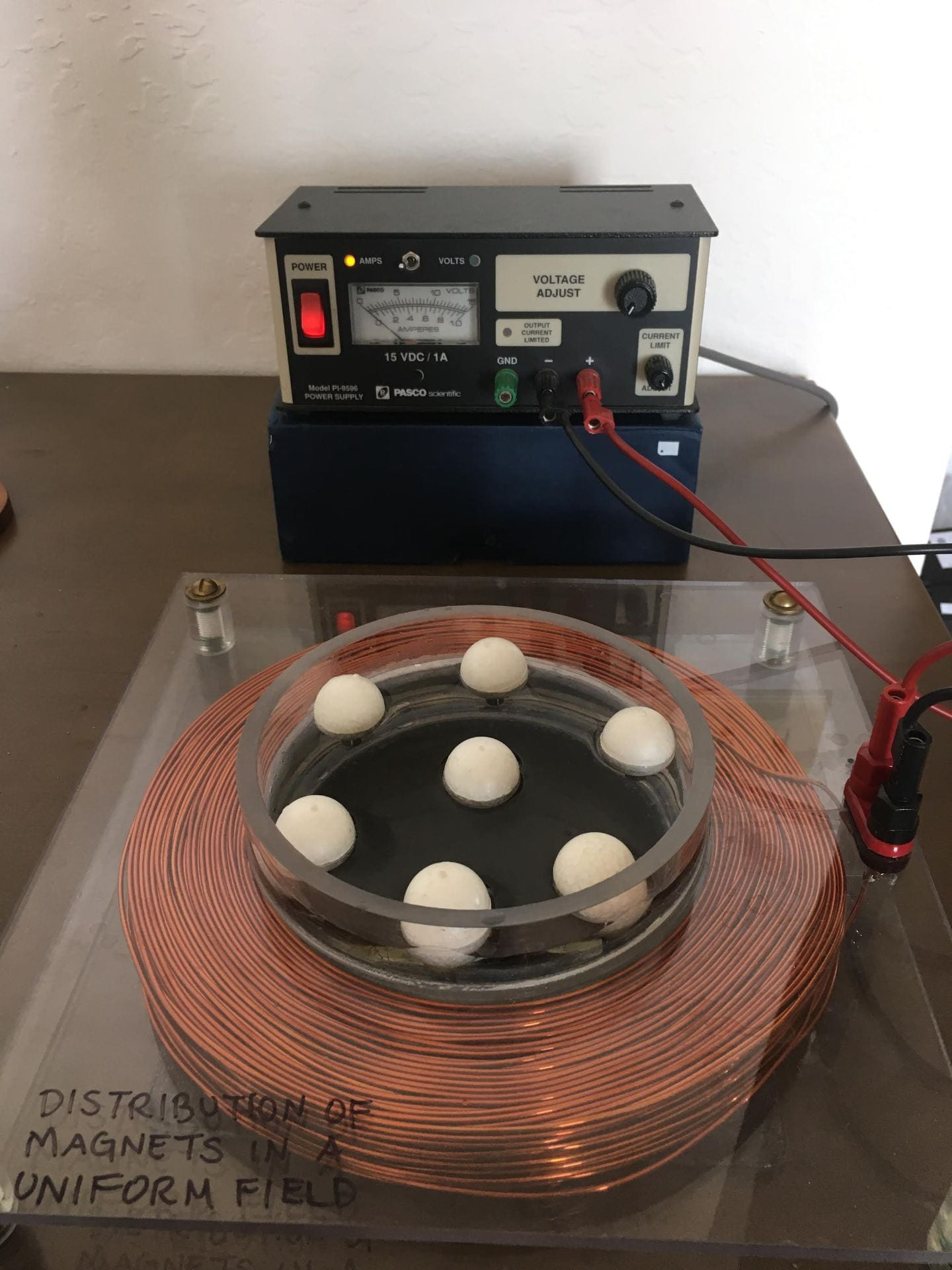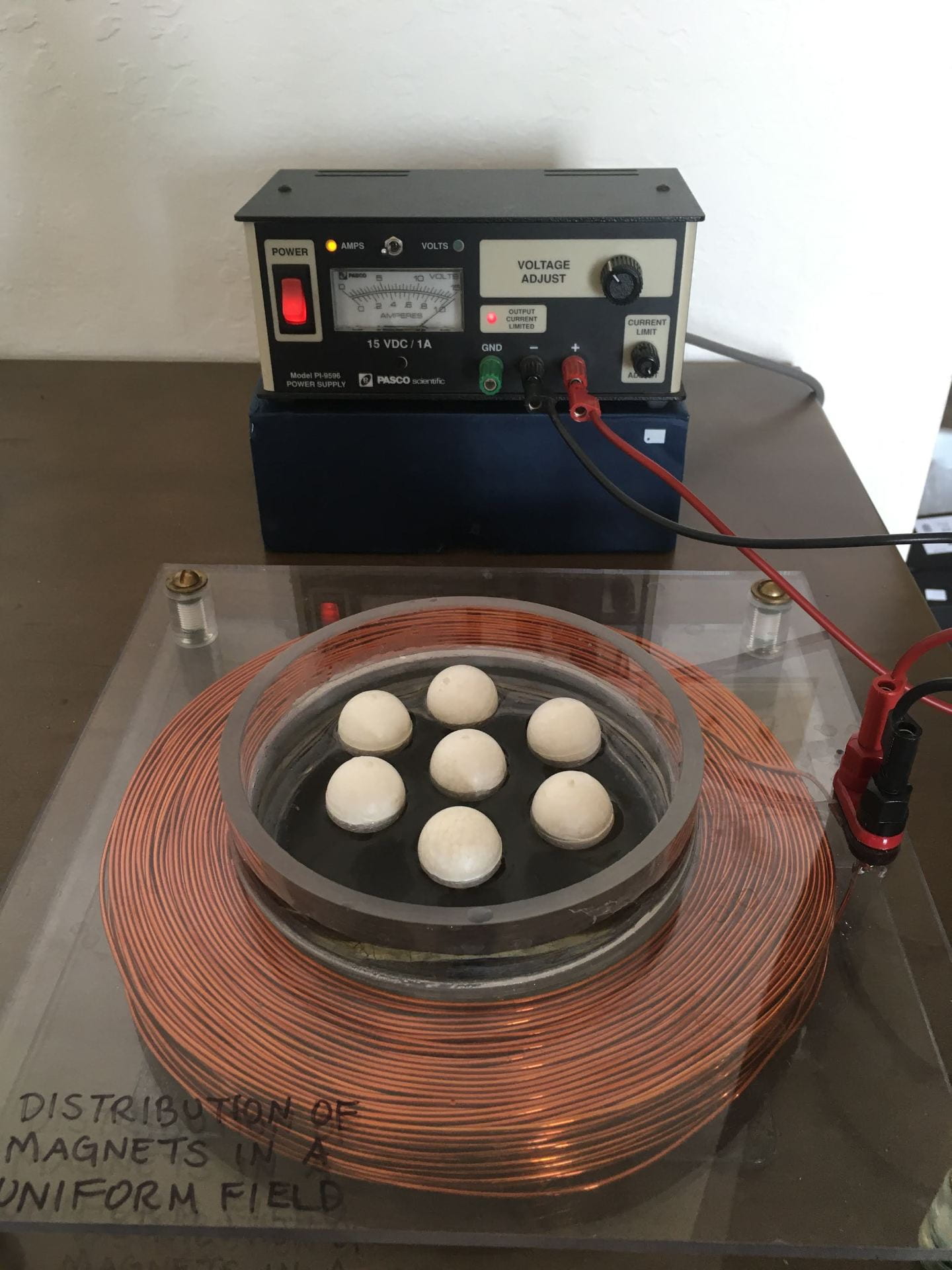Equipment:
- Large solenoid in dish
- ~2 cups of water
- Pasco Scientific power supply
- Red and black BNC
- Styrofoam/magnetic floaters
Demo:
This demonstration shows the law of minimum potential energy in the form of magnetic fields. The law of minimum potential energy states that objects tend to arrange themselves such that the potential energy in the system is minimized. First, a dish, surrounded by a coil of wire, is filled with water and any number of “floaters”. When the coil is not provided current, the magnetic floaters, whose pole axes are parallel, repel each other and will move to the rim of the dish (Fig. 1). When a current is applied to the coil, creating a solenoid, the magnetic field of the floaters attempt to line up with the magnetic field of the surrounding coil. This creates potential energy directing the floaters towards the center of the coil (Fig. 2). This potential energy is converted into the kinetic energy that arranges the floaters so that the localized potential energy is minimized. The balance between the inward and outward magnetic forces leaves the floaters in an evenly spaced circle around a central floater (when >3 floaters) because of the minimum total potential energy principle. The amperage applied to the coil determines the inward force with a higher amperage causing the floaters to move more to the center, while keeping their arrangement. The nonmagnetic floater can be added to show that the magnetic forces are what is moving the floaters.
Notes:
- This demonstration requires an overhead projector.
- The current through the coil should be about 0.5 – 1 A.
- If the floaters are attracted toward the coil, then the direction of the current should be switched.
- Floaters can get stuck to the walls of the dish but can easily be dislodged.

